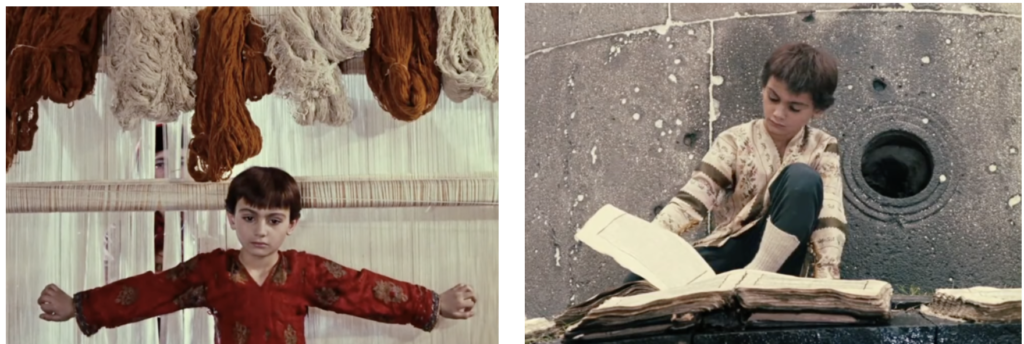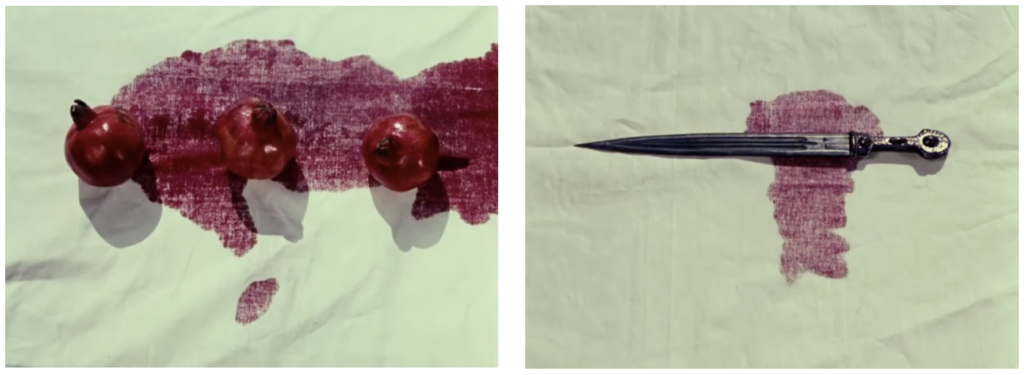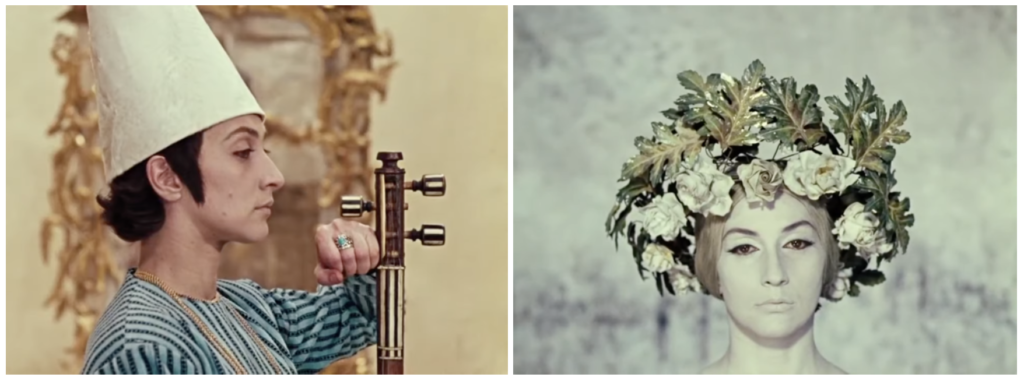The Color of Pomegranates

Life and humanity have no boundaries in essence. But it is again us: we create them for political reasons.
I did my university internship in a factory in Poland with the student exchange program. In 1984, Eastern Europe was still behind the iron curtain. I encountered the reality of controlled borders at the entrance and exit of every country. But I had the most interesting feeling when I was crossing the first border from Turkey to Bulgaria. Everything was the same; the landscape, the trees, the cows grazing in the pastures, the people in the fields.
I had the same feeling while watching Sergei Parajanov’s The Color of Pomegranates (1969). The land border between Turkey and Armenia is still closed. But it was incredible to see how much of a shared culture there was behind the border.
The film chronicles the life of Ashugh Sayat-Nova. He is a singer-poet, or troubadour poet like Âşık (Ashugh) Veysel and many others in Turkey. Rather than the bibliographical life of Sayat-Nova, it visualizes the cultural and mythological world in which he lived and fed into his poetry. It is like a parade of metaphors based on Iranian miniatures and pantomime art. The mise-en-scène includes the architecture, folk art, nature, daily life and music of the poet’s era, as well as religious and mythological figures. All of them are part of the collective memory of the region.
In the film, we see the poet traveling through time. As he wanders as a child between carpet looms and drying carpets, it is as he is discovering the world. While trying to dry the soaked books, again as a child, it is as he is healing the traumas of his future adult life.

The fertile color of the pomegranate symbolizes holistic life. On the one hand, it gives a new life tone to the fabric. On the other hand, it evokes the blood of the martyred poet, death or immortality.

Grape, another symbol of fertility, is also a part of the poet’s life. It represents Sayat-Nova’s days in the Monastery. The winemaking process is like an artistic ritual, like the words of a poem. Some symbols in the film show the mystical side of Sayat-Nova. As for bread, it recalls Jesus, who miraculously fed his followers with barley loaves and fish.
The film ends with the poet leaving the world with two angel boys, walking towards a road, a new journey. Just before the end of the movie, we see the Resurrection Angel played by Sofiko Chiaureli. The script on the screen reads, “Even if the poet dies, the muse is immortal.” The actress plays several other roles in the movie, including the young times of Sayat-Nova, Princess Ana, the mime, and the nun in white lace. Parajanov shows both anima and animus in one person, or what we miss is inside us.

The Color of Pomegranates takes me to the garden of my childhood home. It was only a narrow courtyard, but on one side were a pear tree, a grape vine, flowers and, most beautiful, the ivy honeysuckle flower. The scent of honeysuckle flower spread across the garden walls into the street, as the breath of love and embracing.
